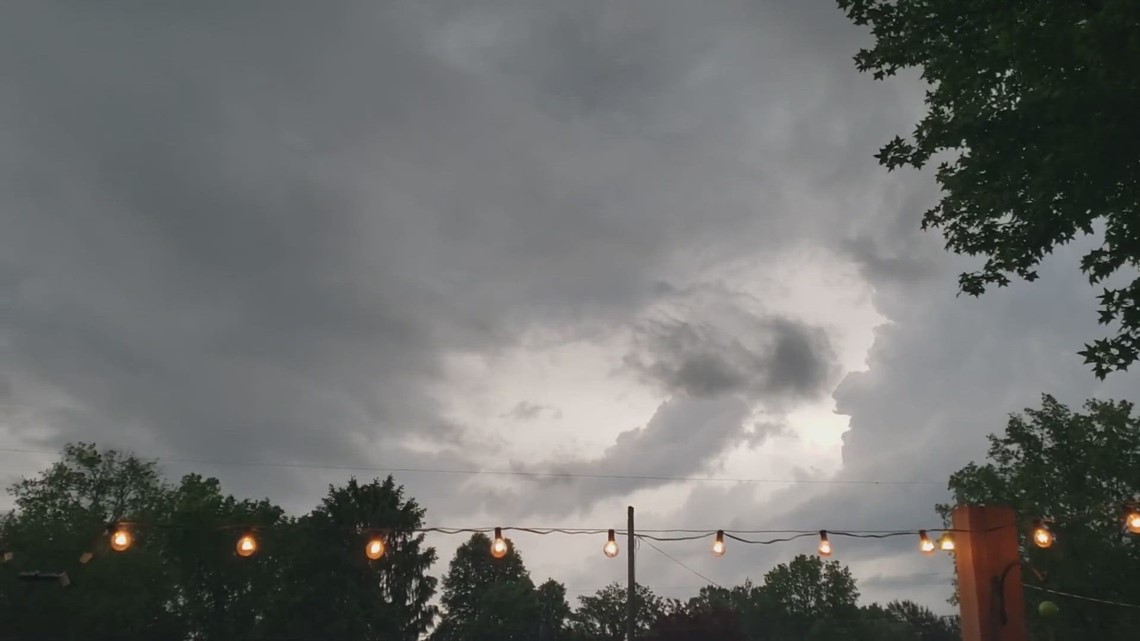Will clouds ruin the eclipse? Here's how meteorologists find out
Graduates from the University of Oklahoma School of Meteorology created the website to provide numerical weather data in a clean, modern and professional way. The "Great North American Eclipse" is set to occur on April 8, generating thousands of dollars in tourism and revenue for communities along the eclipse's path of totality. However, cloud cover could potentially disrupt both eclipse views and revenue. Around 70% of the Earth's surface is typically covered by clouds at any time, which can be a nuisance for people trying to view space events like the eclipse. Meteorologists use numerous weather models to determine whether eclipse-day viewing will be a celebration or disappointment. Pivotal Weather, a website developed by graduates from the University of Oklahoma School of Meteorology, aims to ease anxiety of those worried they won't be able to see the eclipse on the day it occurs.

Published : one year ago by Hunter Bassler in Weather World
Graduates from the University of Oklahoma School of Meteorology created the website to provide numerical weather data in a clean, modern and professional way.
NORMAN, Okla. — Hotels are booking up, vendors are gearing up and local officials are setting up countless events as they predict thousands of tourists will travel to areas in eyesight of the "Great North American Eclipse."
Cities along the eclipse's path of totality are also anticipating thousands of dollars in revenue, but a nearly daily occurrence may threaten both eclipse views and that huge revenue stream for communities nationwide: Cloud cover.
Around 70% of the Earth's surface is typically covered by clouds at any given time, according to a study measuring nearly a decade of satellite data. The atmospheric particles of water or ice play a major role in our planet's water cycle, but they can be a nuisance for people trying to view space occurrences like the eclipse.
Officials in cities along the eclipse's path of totality, like Brenda Newbern in Cape Girardeau, Missouri, are paying close attention to daily meteorological forecasts to ensure the event goes off without a hitch.
"It can rain the day before and rain the day after, but please don't rain on eclipse day on Monday," said Newbern, executive director of the Cape Girardeau Convention and Visitors Bureau. "If you go to one news channel, they'll say 'Rain may be coming in,' but [other stations] tell us that we're going to be right in the middle and we're going to have clear skies."
5 On Your Side meteorologists use numerous weather models to determine whether eclipse-day viewing will be a celebration or a disappointment. As of April 4, around 30 to 50% of the sky may be covered by clouds in the St. Louis region.
Pivotal Weather, a website developed by graduates from the University of Oklahoma School of Meteorology, hopes to ease the anxiety of those worried they won't be able to glimpse the eclipse. A page on the site provides updates on how much cloud cover people can expect on April 8, and is one of the many models 5 On Your Side meteorologists use.
"The more cloud cover occurs around a location the afternoon of April 8, the less likely the eclipse will be directly visible," the page said. "However, if clouds are thin or relatively high in the sky, a spectacular show is still possible ... areas with up to 30% sun blockage could still see the eclipse through thin clouds or breaks in the clouds, while more than 40% sun blockage would likely severely hamper eclipse viewing."
For Cape Girardeau, the forecast has improved over time. While April 4 forecasts of eclipse day list cloud cover at 44%, cloud thickness is only forecasted to be 23%.
